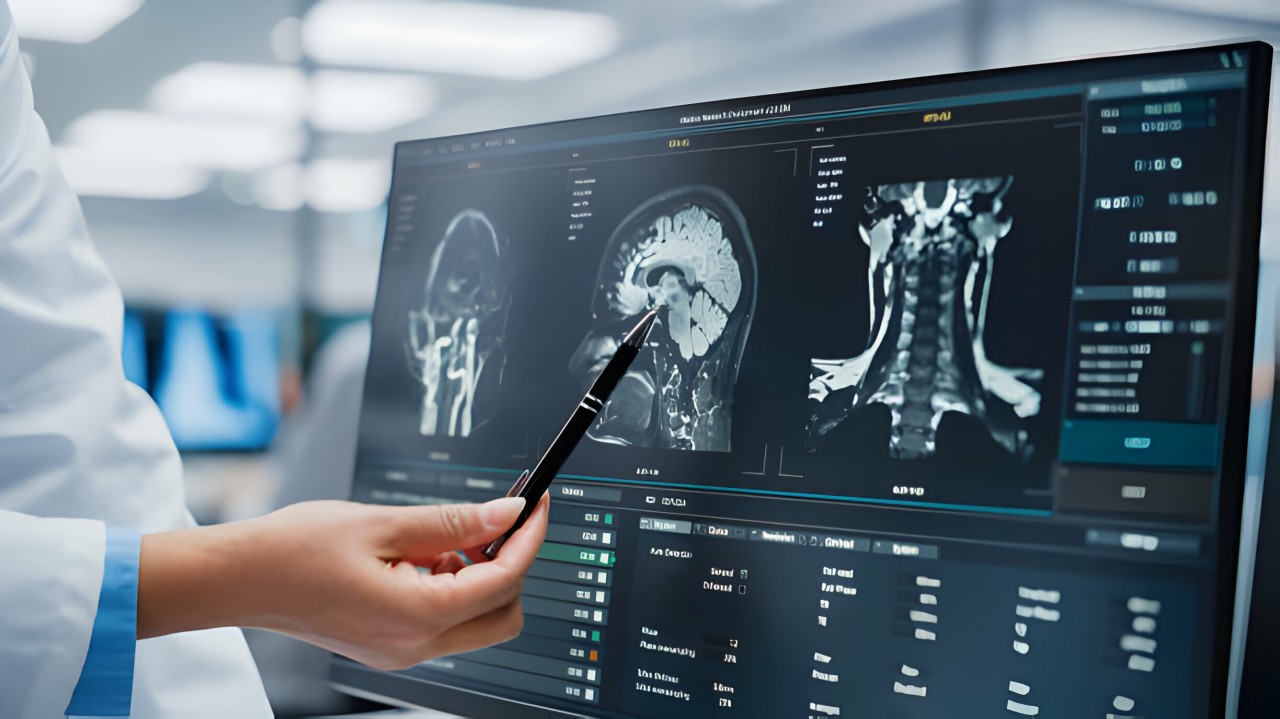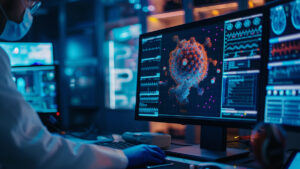Artificial intelligence (AI) is rapidly transforming various sectors, with healthcare being one of the most important, particularly in medical imaging. Radiologists have always played a crucial role in interpreting X-rays, magnetic resonance imaging (MRI), CT scans, and ultrasound. While human interpretation is skilled, it is time-consuming, prone to errors due to fatigue, and susceptible to biased personal opinions. AI is transforming diagnostics by sifting through vast amounts of data and discovering patterns invisible to humans.
This isn’t just about speed; the transformation is about improving diagnostic accuracy, detecting diseases earlier, and providing patients with the right treatment options. By integrating AI into the medical imaging workflow, healthcare is entering a new era of precision medicine, where earlier intervention and better patient outcomes will become the norm. Developments in big data analytics, deep learning, and machine learning technologies are driving this shift. In the coming years, AI will become a crucial partner for radiologists.
Improving Diagnostic Accuracy:
A major advantage of AI in medical imaging is its potential to improve diagnostic accuracy. Radiologists are often under immense pressure to review hundreds of scans daily, missing details. Artificial intelligence systems, trained on millions of annotated images, can detect problems such as tumors, fractures, and internal bleeding with astonishing accuracy. AI has been proven to match or even surpass the diagnostic capabilities of professional radiologists across a wide range of procedures. This doesn’t mean AI replaces human expertise.
Rather, it acts as a second pair of eyes, confirming what you see or highlighting problems that require further investigation. AI’s power lies in its capacity to identify subtle patterns or abnormalities that would otherwise go unnoticed in intricate situations. For instance, AI-driven pattern recognition technology can identify early-stage tumors that display multiple visible signs, even before they surface in traditional examinations. With advances in AI technology, diagnostic errors are likely to be significantly reduced, making healthcare safer and more reliable.
Fast Image Processing and Turnaround Time:
In the field of medicine, time is often crucial. Delays in image analysis can complicate important treatment decisions, increasing patient risk. AI can assess complex information in just seconds, significantly accelerating image processing. This speed improves patient recovery and reduces the number of patients waiting in busy hospitals and clinics. In emergencies such as stroke or trauma, for example, AI devices can quickly highlight critical scan results, allowing doctors to focus on the most important life-saving measures.
The efficiency of AI also allows radiologists to focus on more complex cases requiring human judgment while enabling pre-screening of routine scans. Patients can also feel more comfortable receiving results faster, as they don’t have to wait too long. By integrating AI into picture archiving and communication systems (PACS) and hospital databases, healthcare institutions can create seamless, efficient workflows that maximize time and resources. This rapid processing is particularly beneficial in rural or resource-poor areas, where a shortage of radiologists can lead to delayed diagnosis.
Early Disease Detection and Preventive Care:
Early disease detection is often the key to successful treatment, and AI is transforming this landscape. Often, subtle disease indicators, hidden in complex body parts or difficult to detect, go unnoticed by traditional medical imaging. AI algorithms can simultaneously analyze a patient’s old and new scans to detect patterns or changes that could indicate conditions such as cancer, heart disease, or neurological disorders. AI has been shown to detect malignant abnormalities years before they manifest, for example, in breast cancer screenings.
AI-driven retinal scans can also detect early signs of diabetic retinopathy, which can help doctors act quickly to prevent blindness. This shift toward predictive diagnostics aligns with the broader trend toward preventive care, meaning that patients are treated before they show signs of disease, rather than after they develop. AI can not only help doctors intervene earlier, improving survival rates, but it can also reduce long-term treatment costs and improve patients’ overall quality of life.
Personalized Precision Medicine:
Artificial intelligence is transforming medical imaging in many ways, not only by identifying problems but also by enabling personalized treatment plans. AI systems can combine image results with genetic data, lifestyle data, and medical history to create personalized care plans for each patient. This integration helps physicians determine which medications are most appropriate for each patient, improving treatment outcomes. AI can examine images of tumors and determine which chemotherapy regimen is most effective.
In cardiology, AI-driven imaging technology can pinpoint the precise location and severity of arterial blockages, enabling physicians to create personalized treatment plans. This precision reduces trial and error, eliminates unnecessary treatments, and improves patient safety. As AI systems continue to develop and learn from new cases, their ability to provide personalized recommendations will continue to improve. AI is facilitating the transition of healthcare from a universal approach to individualized care, guaranteeing that every patient receives the most suitable treatment.
Conclusion:
Artificial intelligence is no longer a concept of the future; it is revolutionizing the field of medical imaging diagnostics. AI is changing the way physicians view and process medical images, enabling more accurate diagnoses, faster image processing, earlier disease detection, and personalized treatment. This change isn’t about replacing radiologists but about giving them tools to improve their work and reduce error rates. The application of AI in medical imaging can also help address significant global challenges, such as the shortage of skilled radiologists and the demand for faster, more reliable care. As technology continues to develop, AI will play an increasingly important role in medical diagnosis. This will ensure that patients receive timely, accurate, and personalized care tailored to their needs. AI will work closely with people to save lives and create a better future for healthcare.
FAQs:
1. How does AI improve the accuracy of medical imaging diagnoses?
AI uses complex algorithms trained on vast amounts of data to detect patterns and problems in scans that humans might miss. This provides radiologists with a second layer of verification.
2. Will AI replace radiologists in the future?
AI is designed to support radiologists, not replace them. It enhances their work through fast and accurate analyses, while humans make the final clinical decisions.
3. What diseases can AI detect using medical imaging?
Artificial intelligence can detect many different diseases, including cancer, heart disease, neurological disorders, bone fractures, and infections.
4. Is the use of AI in medical imaging safe and reliable?
Yes, but AI systems require extensive testing and validation to ensure their safety and accuracy before they are used clinically.
5. What impact will AI have on patients living in rural or low-income areas?
AI can analyze scans remotely, accelerating diagnoses and providing expert-level information even when radiologists are not readily available, helping to reduce healthcare disparities.




